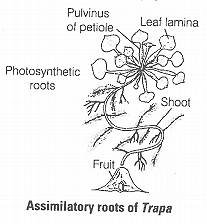In Opuntia, the stem is modified into a flattened green structure to perform the function of leaves, (i.e., photosynthesis). Cite some other examples of modifications of plant parts for the purpose of photosynthesis.


© 2025 GoodEd Technologies Pvt. Ltd.